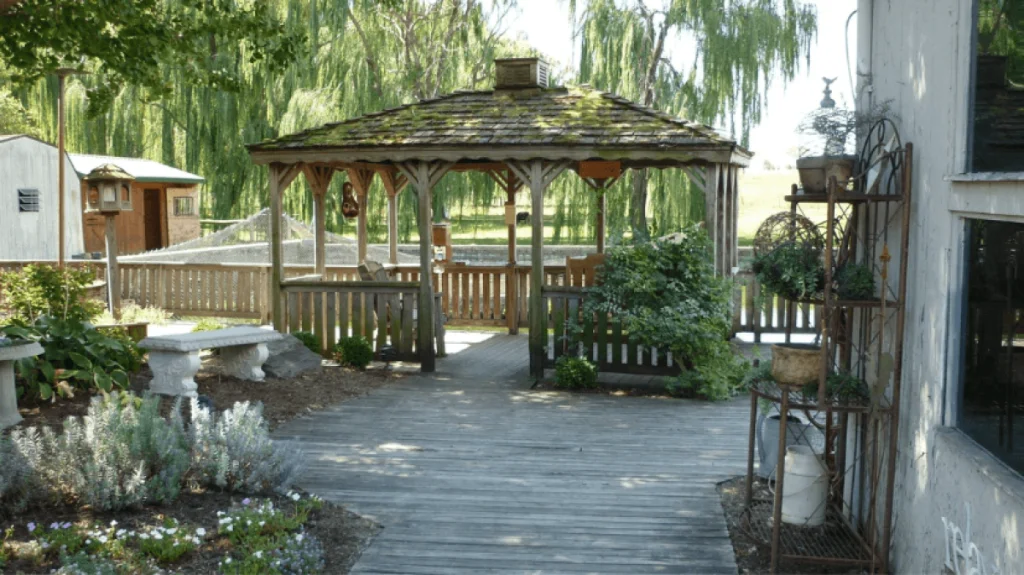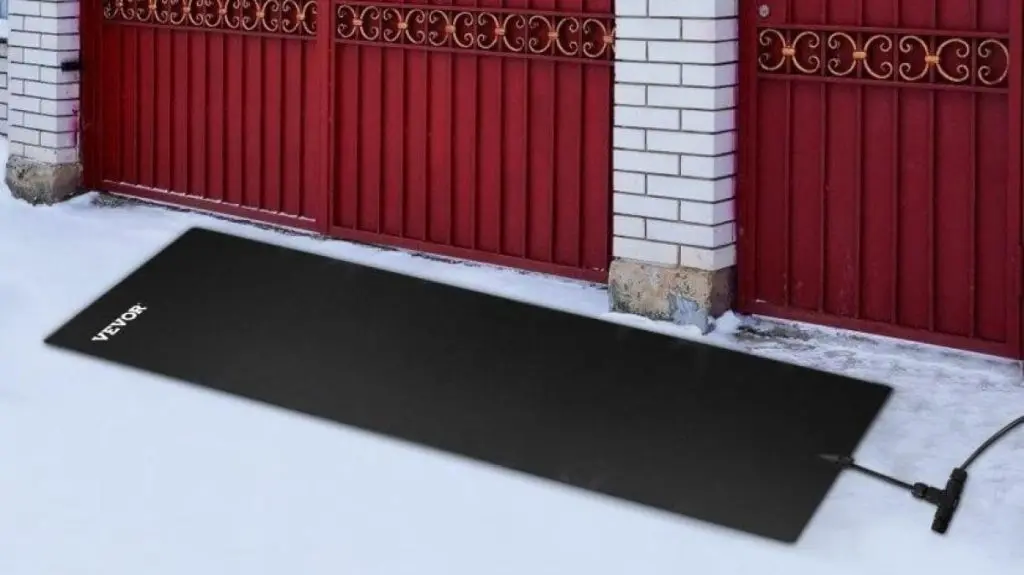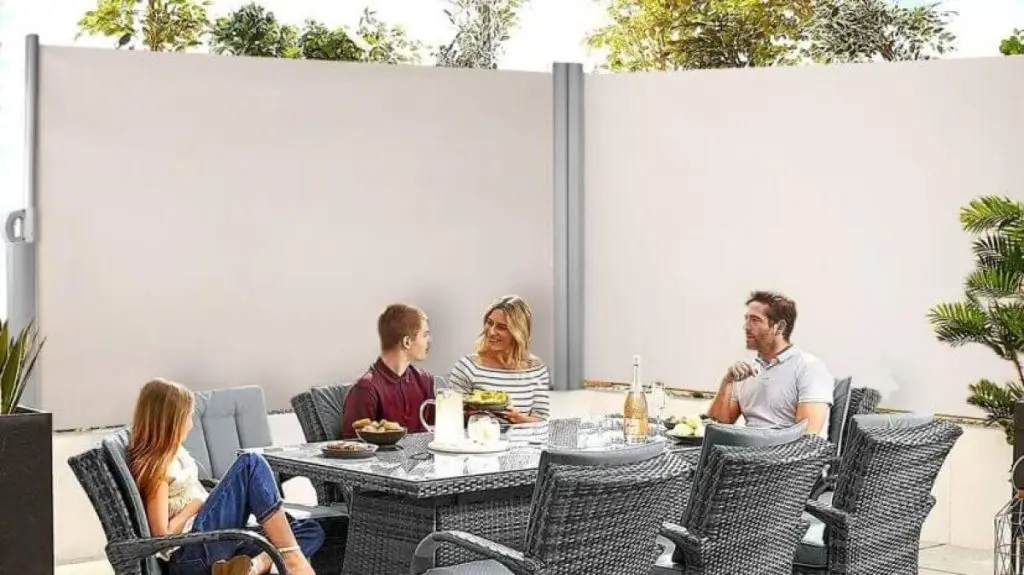Who does not enjoy a breath of fresh air while sipping a punch in the backyard? That time of year is around the corner, and everyone is looking for inspiration and DIY makeover tips to prepare their backyards for their unwinding sessions.
Most of them are turning to decorative pieces like pergolas or gazebos to elevate their space. They do not look aesthetically pleasing only but help keep the searing sun of summer and the chill of autumn at bay.
In terms of their roles in your garden, pergolas and gazebos serve similar needs, but they are still different. Generally, a pergola provides partial shelter, lets sunlight pass, and the margin for vines to grow between the crisscross of its roof. A gazebo, meanwhile, offers more protection and full coverage for your designated sitting area.
In this article, we have brought you a detailed guide on a pergola vs. a gazebo, their differences, and how to choose one for yourself.
What is a Pergola?
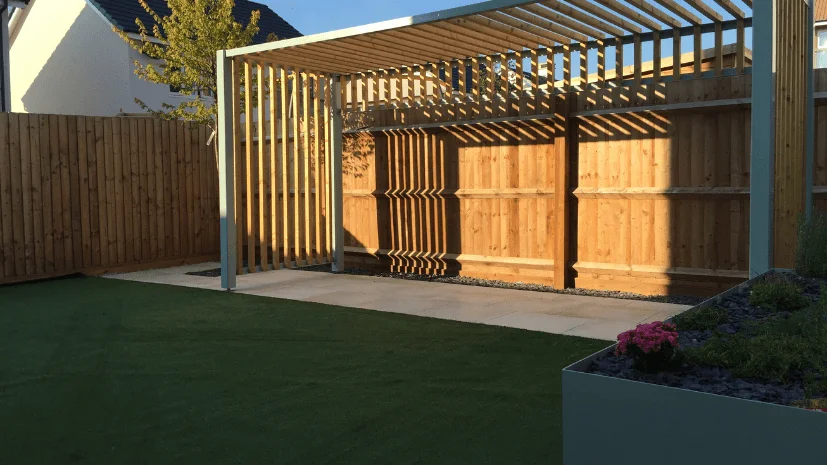
A pergola is a masterpiece of modern architecture. Although it has been around since the 1640s, but is still relatively modern than a gazebo. They are not always freestanding structures, but their structural sleekness makes them a great addition to a contemporary house.
You will find pergolas in varied shapes, including round, oval, square, and rectangular. So, they provide you a margin for more creativity when building one for your sitting area.
What is a Gazebo?
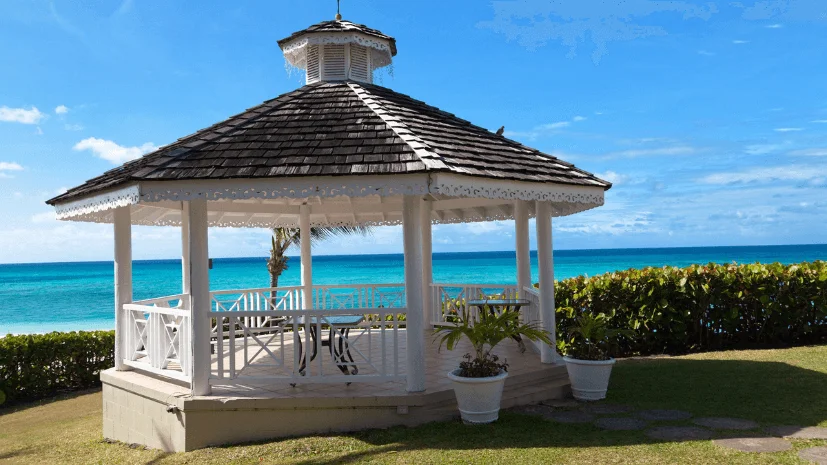
Often found in old Egyptian gardens, gazebos have been around for a long time. Given their importance in Egyptian architecture, it is a no-brainer that these structures make a luxurious lounging option.
Nowadays, they are a popular choice for gardens big enough to accommodate them. Their ornate and layered style will remind you of a Victorian garden setting. Due to their standalone and freestanding nature, they are a common sight in parks and playgrounds.
How are Pergolas Similar to Gazebos?
In addition to their similar service to your house’s backyard, both structures provide shade and privacy. The structures are perfect lounging options for as many as fifteen to twenty people. Regardless of the material or size of your house’s pergola and gazebo, both structures maximize your property’s value and aesthetic appeal.
What is the Difference between Pergola and Gazebo?
Picking between a pergola and a gazebo can be easier if you compare the characteristics of the two structures. Let’s highlight some key differences between a gazebo and a pergola.
1. Function and Roof Differences
A major difference between a gazebo and a pergola lies in their roof layout and protective function.
• Roof Design: A pergola features a roof with horizontal or interlocking beams, whereas a gazebo has a closed ceiling.
• Weather Exposure: Given its roof design, a pergola provides little to no protection from sunlight and rain. On the contrary, a gazebo offers maximum coverage from all weather conditions alike.
• Construction Material: Typically, gazebos comprise of strongest and most durable materials, like stones, wood, metal, etc. Meanwhile, pergolas can consist of various materials, including wood, vinyl, polyvinyl chloride, and fiberglass. Pergolas are not prone to structural failure but promise comparatively lesser durability than gazebos.
2. Appearance and Architecture
Not only the roof but there is a huge difference between a gazebo and pergola architecture and appearance.
• Shape: Not always, but pergolas are usually rectangular in shape; thus, you can utilize most of your outdoor space. Gazebos can leave unusable and awkward spaces at your garden’s edges, provided their round shape.
• Freestanding vs. Attached: You will always see a gazebo as a freestanding and standalone structure, be it in a house or a park. On the other hand, a pergola can be both a freestanding and attached piece of construction. Therefore, a pergola lets you be more creative while planning your home exterior.
• Floor: While a pergola sits on an existing deck, floor, or lawn, a gazebo has a finished floor. A gazebo needs a sturdy patio or a slightly raised bottom, being standalone in nature.
• Sides: Pergolas do not have closed sides, whereas gazebos can be both open and enclosed. Permanent gazebos can comprise railings, shutters, or even mesh screens to ensure maximum protection from environmental factors.
• Extending Your Home Exterior: A pergola can serve as an excellent extension of your house exterior. On the contrary, gazebos cannot do that because they are standalone structures.
3. Installation Complexity
Adding a pergola or gazebo to your garden comes with its specific requirements and codes.
• Codes and Permits: Firstly, you need to check with your local regulations if they allow you to have such a structure in your backyard. In most cases, pergolas do not require permits, but a gazebo will. Some towns might require a specific distance between your gazebo and the road or utility poles.
Additionally, if you are digging to install your structure, call your local utility company to make sure you are not hitting water pipes, sewer, or electrical cables.
• Requirements: Building a gazebo vs. a pergola for a deck comes with different installation requirements based on their nature.
The requirements for a pergola depend on its design and assembly. You have to ensure that you meet the manufacturer’s requirements for a long-lasting garden structure. On the contrary, for a gazebo, you have to meet the manufacturer’s requirements and ensure its base has proper water drainage and firmly stands on the concrete footer.
4. Cost Factors
When you put a pergola vs. a gazebo, you will notice a significant difference in their prices. Whether you want a permanent or temporary garden structure, a basic pergola will always be cheaper. Building a simple pergola to elevate the house’s exterior is well within the scope of a DIY enthusiast. So, you can get your hands on VEVOR tools at the best prices and save yourself labor costs at the same time.
On the contrary, gazebos are costly investments because of their construction materials. Moreover, hiring a set of handyman’s hands is inevitable when building these freestanding garden structures. If you’re looking for a cost-effective solution, consider a cheap backyard makeover with a pergola.
5. Space Requirements
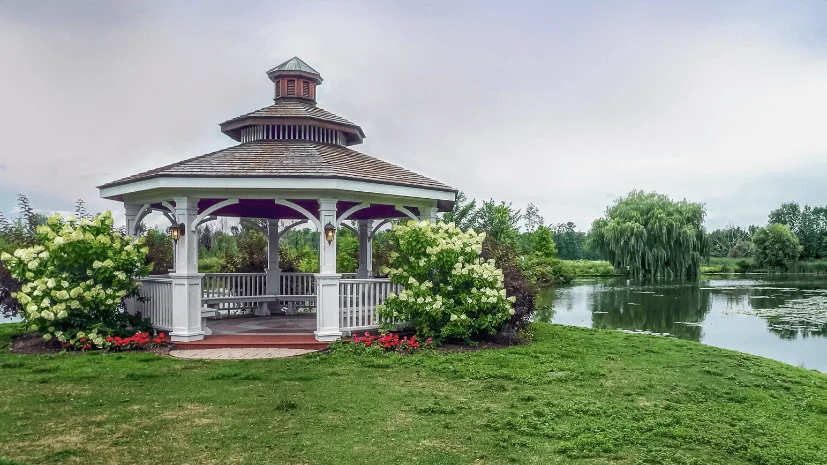
Gazebos come in different sizes, but these freestanding structures require more space than pergolas. Their space requirements make them more suitable for big courtyards, backyards, and gardens. Besides, their structural layout is different than that of a pergola.
A pergola is more adaptable when it comes to spaces because of the creative edge it gives in its design.
6. Value
Both outdoor structures elevate your house’s aesthetic appeal and increase its value, but pergolas are economical in the long run. They provide better returns on the investments as compared to a gazebo because of the financial investments on the front end.
Moreover, gazebos are complex structures that are costly on the pocket and require a lot of maintenance. So, your property’s value will indirectly depend on how well you keep your backyard gazebo. It is a no-brainer that a gazebo is not a budget-friendly investment to attract buyers like a pergola.
How to Know Which One is Best for You, Pergola or Gazebo?
Both garden structures can make great spots to hang out with your friends, but are you still wondering pergola vs. gazebo which is better for your house? Well, sometimes, the decision can be more confusing than it looks. Roughly, you need to consider the following factors to make it easy:
Assessing Your Needs and Outdoor Space
Firstly, consider what you need and what you and your family will enjoy more. Then, you can consider environmental factors, such as how much it rains in your locality. If it pours often, a gazebo will make a better choice for you with its full coverage roof. However, if you rarely get to experience showers, you can prefer a pergola over a gazebo to let the light and air inside your sitting area. You can further decorate your shade with vines and plants to increase its overall aesthetic appeal.
Another factor that might help you decide better is the space factor. Gazebos come in various sizes and designs, but they are not space-economical. It can make your backyard look cluttered and can be rather overwhelming to the sight than pleasing.
Considering Budget and Cost Factors
Whether you would like a seasonal structure in your garden or a permanent one, your budget will be one important consideration. If you have enough space and a budget, a gazebo will be a great addition to your backyard.
In case of a tight budget, you can build yourself a DIY pergola from VEVOR. By doing so, you will be elevating your house’s look and value without having to spend a fortune.
Matching Personal Style and Preferences
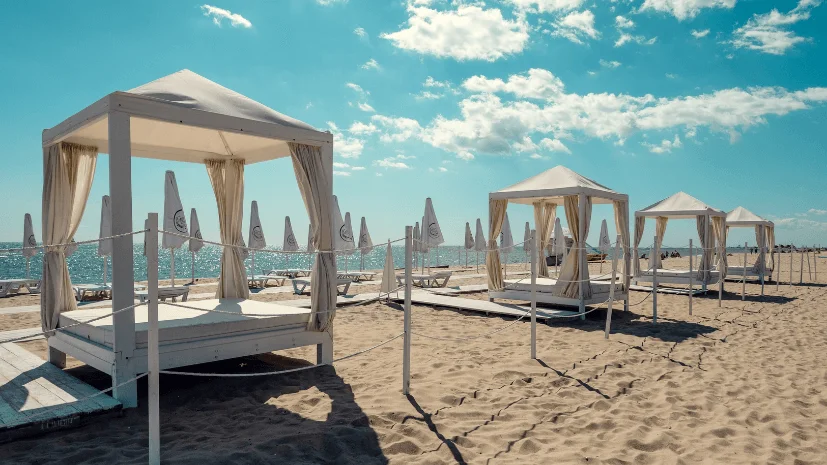
Whatever you create in your house’s yard has to go with your personal preference, but it should also match your property’s style.
It does not matter if you choose a pergola or gazebo as long as it compliments your home’s overall look. You can receive a complete return on investment and enhance your house’s value in true terms only then.
Determining Desired Functionality and Use
The last thing to put the pergola vs. gazebo conundrum to rest is your use and functionality. Ask yourself how often you will find yourself chilling in its shade; this might help you decide better. However, if you need to add a structure only to increase the aesthetic appeal of your house, you can consider adding a pergola instead of a gazebo. The reasons are its economic benefits and low-maintenance costs.
FAQs about Pergola vs. Gazebo
1. Are pergolas and gazebos used for the same purpose?
Pergolas and gazebos are secondary outdoor structures that provide shade and shelter from inclement weather, a place to rest, and visual interest to your property, giving it a luxurious outlook. While pergolas and gazebos create an outdoor lounging area, there also exists a critical distinguishing feature between the two, that is, the roof canopy.
2. What are the typical materials used in building pergolas and gazebos, and which is more durable?
The most common materials used to make pergolas and gazebos are wood, aluminum, vinyl, and metal, such as steel. Although less commonly used, metal, such as wrought iron, aluminum, or steel, is the most stable and durable material to create pergolas and gazebos. It can withstand harsh weather, unlike other materials.
3. Can both pergolas and gazebos accommodate additional features like curtains, lighting, or fans?
The short answer is yes! These features can be a perfect addition to your pergola or gazebos, giving it a luxurious look. If the roof is partially covered, use a pedestal fan or a wet-rated ceiling fan specially designed to endure exposure to moist or damp environments.
4. Which one provides better shade and protection from the elements, a pergola or a gazebo?
A gazebo would be your best choice for an outdoor lounge with better shade and protection. The reason lies in its roof canopy, which is solid and fully covered compared to a pergola. It allows you to enjoy the outdoors with proper shade and protection from the sun or bad weather.
5. Which one is easier to assemble and install?
Since a pergola has a simpler architecture, it is much easier to install and assemble. And since it is easier to build, it is also DIY friendly. Unlike a gazebo, a pergola does not require too many materials and labor. However, a pergola may lack the customizability options available with a gazebo. It’s important to consider and evaluate your needs and budget before making a decision.
Winding Up
Outdoor lounging trends can never go out of style, which makes a pergola and gazebo a great spot to chill with your family in the summer.
The two structures serve the same purpose but are different in many ways. The choice depends on your property’s structure, needs, preferences, and budget, obviously. This article will act as your guide in helping you decide what will suit you better in the long run.
As beautiful as these garden structures look, you will have an amazing time building these with our kits. Be it a DIY garden makeover or you hire someone, VEVOR is determined to provide you with the finest products at great prices. Let’s elevate your home exterior together!

